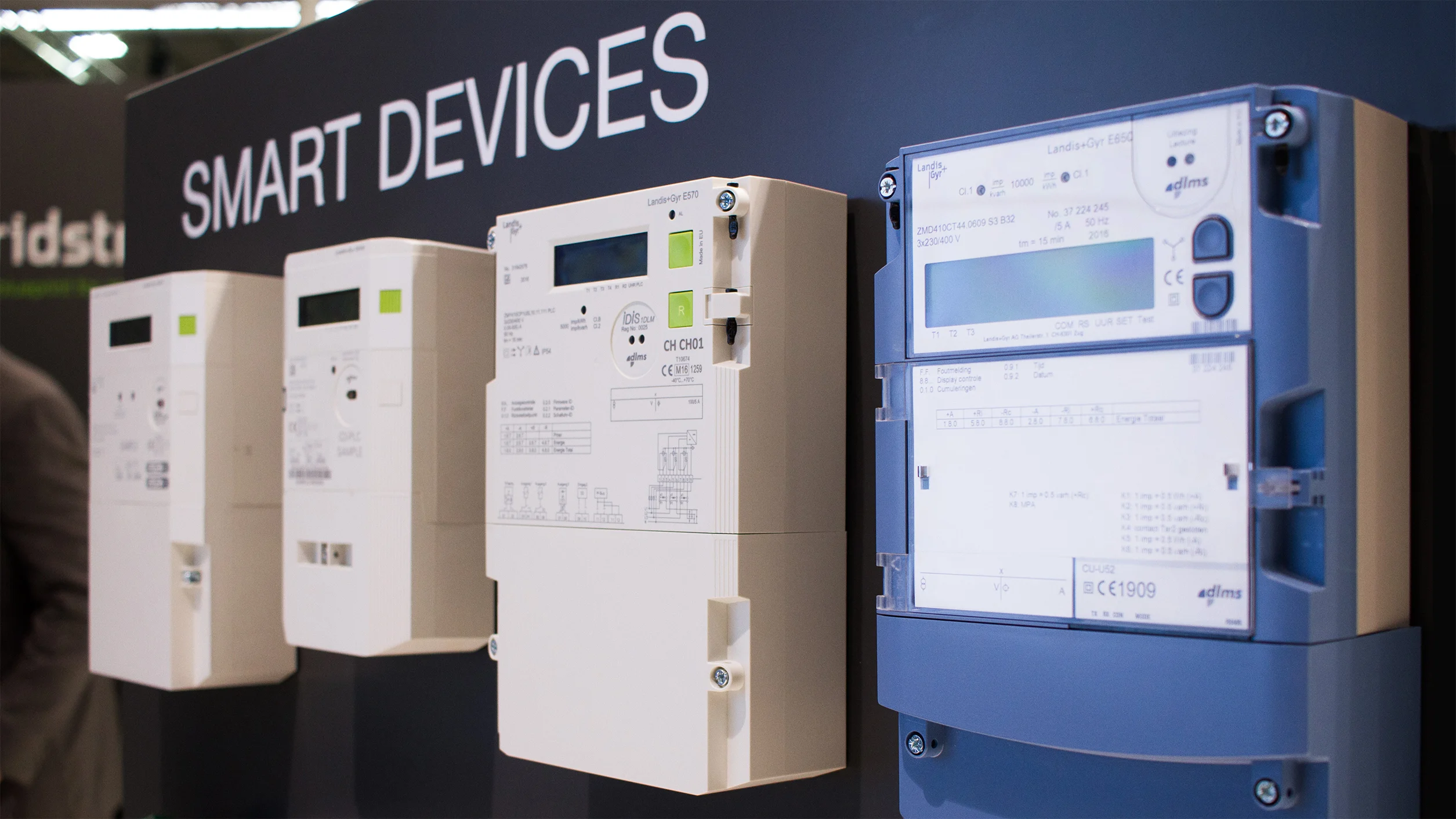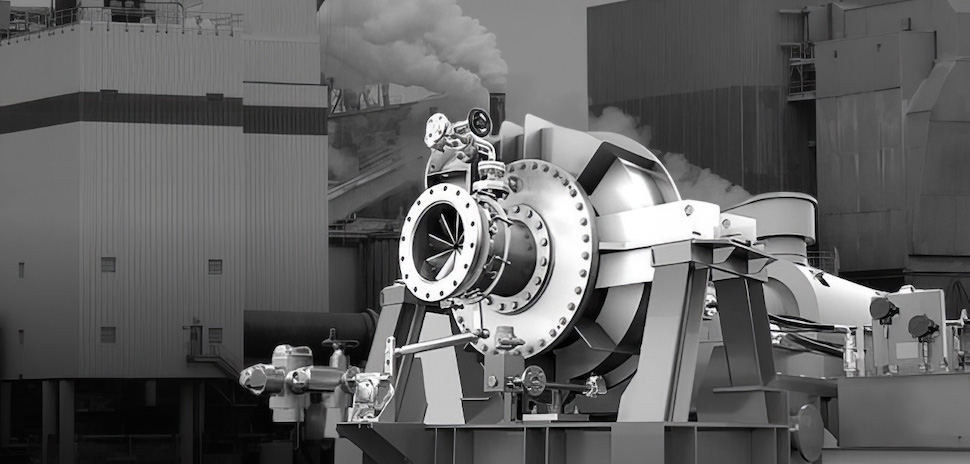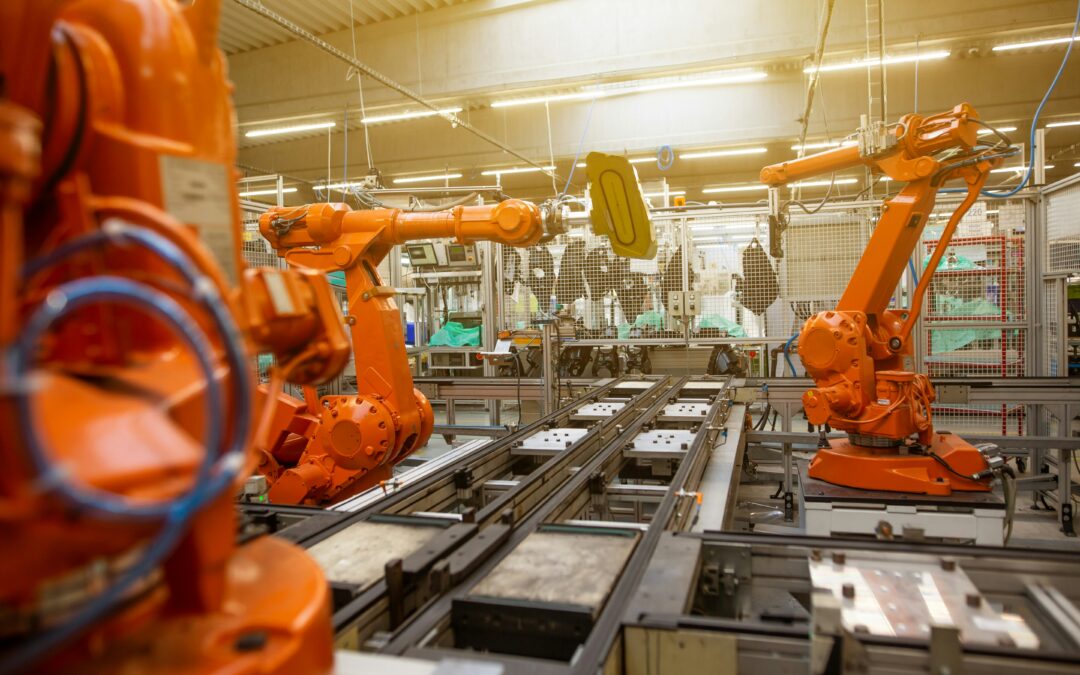The industrial sector can drive massive efficiency gains by making low- to no-cost changes
Reducing energy consumption through behavioral or user-based behavior and upgrading to more energy-efficient technology is an early and essential step in any commercial and industrial energy efficiency program. In a recent episode of our podcast, Renewable Rides, we spoke with Josh Bachmann, VP of Customer Engagement at Cascade Energy about how industrial customers can reduce energy waste, electrify operations and manage load flexibility. In this post, we unpack more of what we discussed about how industrial facilities, operations, and energy managers should think about energy efficiency and clean energy.
Cascade Energy has been operational for three decades, focusing on the industrial sector in three main markets: demand-side management, working directly for industrial end-users, and participating in government/market transformation programs. VECKTA has partnered with Cascade to provide commercial and industrial customers with a streamlined approach to assessing and planning for commercial and industrial energy efficiency upgrades and onsite energy generation systems.
Focus on the facility
In today’s energy landscape, industries frequently opt to purchase carbon credits or invest in offsite renewable energy projects to reduce emissions, but they’re not looking at the problem holistically. The focus should first be put on the industrial and commercial buildings. The brick-and-mortar locations hold a tremendous amount of trapped value – in the form of bloated energy costs – that if unlocked through onsite generation and efficiency gains, will yield more resilient and future-proofed operations.
Josh and his team recommend facility, operations, and engineering leaders look at efficiency first and decarbonization second. By eliminating energy waste initially, businesses can rationalize investing in clean energy sources—ensuring that the energy they harness is maximally utilized. This method promises a more sustainable and cost-efficient path to decarbonization.
The human element
Many businesses mistakenly think that their energy efficiency journey is complete. When a facility claims they’ve “done everything” for energy efficiency, that’s often where Cascade sees the most potential. Just because a company invests in a suite of industrial energy efficiency technologies, doesn’t mean it will achieve the expected energy efficiency gains. The technology needs to be used correctly. For instance, a smart thermostat can still be mismanaged, leading to inefficiencies despite its modern features.
The human element is the largest yet often overlooked component of industrial energy efficiency. Energy efficiency measures are frequently seen as secondary to the primary business operations, making it challenging to prioritize these initiatives. Industry leaders must focus on educating and training their workforce to utilize energy-saving technologies appropriately. Even state-of-the-art systems can be grossly underused or mismanaged if the right mindset and understanding are lacking.
The high turnover rates in the current labor market also pose challenges to maintaining energy efficiency benefits. As experienced personnel leave, they take their knowledge with them. Thus, creating resilient, well-documented processes and training multiple team members ensures continuity in energy-efficient practices.
Tips on ensuring effective industrial energy efficiency implementation
- Set up comprehensive training programs emphasizing the importance of energy efficiency and establishing it as a priority.
- Overcome skepticism by convincing stakeholders that slight operational changes will not hamper their main business activities. Effective communication and demonstrating tangible results build confidence in energy efficiency measures.
Realizing Financial Gains from Commercial and Industrial Energy Efficiency
The potential financial gains from industrial energy efficiency are not just confined to greenhouse gas emissions reduction. When businesses unlock significant energy savings, they are effectively improving their bottom line—a concept that is far from trivial. It’s an opportunity that CEOs, CFOs, and COOs would be remiss to overlook.
Real-World Success: Sysco Food Service
Take Sysco Foods—a flagship customer of Cascade Energy. Since the mid-2000s, Sysco has reduced its energy intensity by an astounding 40%. This remarkable achievement translates to years of free energy for their operations and stands as a clear example of transformative change. The financial implications of such improvements are substantial, offering avenues for businesses to reallocate saved costs into other strategic initiatives.
Combining Tech and Behavioral Change
While advanced technologies like LEDs and HVAC systems are the most commonly thought of upgrades in energy efficiency programs, industrial settings offer numerous other opportunities. These can be categorized broadly into low and no-cost operational measures and more substantial capital projects.
Operational measures often involve maximizing the efficiency of existing equipment:
- Control Systems: Installing control mechanisms for equipment such as motors can yield immediate energy savings. For example, sensors and control systems can automatically manage the operations of motors and other machinery, ensuring they only run when needed and at optimal speeds.
- Sensor Calibration: Ensuring that sensors are correctly calibrated and functioning can drastically improve system efficiency.
- Cycling Motors: Variable frequency drives (VFDs) on motors allow adjustments to speed and power usage, reducing unnecessary energy expenditure during lower demand periods.
These changes are not rocket science but can collectively provide significant energy and cost savings.

Variable Frequency Drives: The Energy Efficiency Workhorse
How VFDs Transform Energy Use
Think of a motor without a VFD as a bike with only one gear—it works, but it’s not efficient for all terrains. A VFD allows the motor to operate at varying speeds, akin to upgrading from a single-speed bike to a multi-gear bicycle. Most motors are designed for peak load conditions, which only occur sporadically. When not at peak load, VFDs can adjust the motor’s speed, leading to substantial energy savings.
Practical Applications in Industrial Settings
- Refrigerated Warehouses: Evaporator fans can operate at variable speeds to match real-time cooling needs, effectively reducing energy use and costs. Lowering fan speed by just 10% can cut power consumption by approximately 25% due to the cubic relationship between speed and power.
- Pump Systems: By controlling the pump’s speed to meet demand, energy use is optimized, reducing both costs and wear on the equipment.
Integrating VFDs in Smart Grids
VFDs are not just about savings during regular operations; they also play a crucial role in demand response events. During periods of peak grid demand, VFDs can reduce the speed and power use of motors, decreasing the overall load on the grid. For instance, dropping fan speeds slightly during a peak can significantly reduce power usage without major reductions in operational capacity.
Imagine a refrigerated warehouse reducing its evaporator fan speed by 10% during peak electricity demand. This minor adjustment can result in a significant 25% drop in power consumption for the event’s duration, aiding grid stability and cutting energy costs.
Electrification in Industrial Settings
Electrification is emerging as a pivotal element in reducing greenhouse gas emissions in industrial and commercial buildings, particularly through the deployment of industrial heat pumps. Unlike Europe and Japan, where industrial heat pumps are more commonplace, the U.S. is still in the nascent stages of adopting this technology.
What Are Industrial Heat Pumps?
Industrial heat pumps operate similarly to residential versions but on a larger scale and with industrial applications. They are efficient equipment that extracts heat from various sources, such as ambient air or waste heat streams from industrial processes, and raise the temperature to meet specific thermal requirements. This process can replace traditional fossil fuel-based heating, thereby significantly reducing greenhouse gas emissions.
For more on industrial heat pumps, listen to our discussion with Skyven Technologies’ CEO: Decarbonizing Industrial Steam with Heat Pumps.

Challenges and Solutions
Several hurdles must be overcome to mainstream industrial heat pumps:
- Financial justification: The initial capital investment for heat pumps can be substantial. Financial models and incentives need to be developed to demonstrate long-term cost savings and environmental benefits.
- Supply chain and expertise: A robust supply chain is necessary to ensure the availability of heat pumps and related technologies. Additionally, expertise in designing, installing, and servicing this equipment must be cultivated within the industry.
The Role of Data Analytics and AI
The utilization of data analytics and artificial intelligence (AI) is transforming the landscape of energy management. Technologies like Energy Management Systems and sensors provide real-time insights and predictive analytics, enabling more efficient energy use and proactive maintenance of equipment.
Real-Time Monitoring and Control
Advanced data analytics platforms can monitor energy consumption in real time, identifying inefficiencies and suggesting corrective actions.
- Smart Sensors: Installing smart sensors throughout a facility helps collect detailed data on energy usage, equipment performance, and environmental conditions. This data can then be analyzed to identify patterns and anomalies.
- Energy Management Systems (EMS): An EMS integrates data from various sources to provide a comprehensive view of energy consumption. It can control and optimize energy use by adjusting settings and schedules for lighting, HVAC systems, and machinery based on real-time needs.
Predictive Maintenance
AI-driven predictive maintenance uses data analytics to forecast when equipment is likely to fail, allowing for timely maintenance and reducing downtime.
- Predictive Algorithms: AI algorithms analyze historical and real-time data to predict potential equipment failures. This ensures that maintenance can be performed proactively, avoiding unexpected breakdowns and costly repairs.
- Optimization of Maintenance Schedules: Data-driven maintenance schedules optimize resource allocation, ensuring that maintenance activities are performed only when necessary. This reduces unnecessary maintenance costs and extends the lifespan of equipment.
Financial Viability of Energy Efficiency Projects
Making the Financial Case
What truly propels energy efficiency projects to the forefront is their financial viability. Many initiatives, particularly those with a payback period of two to three years, swiftly ascend to priority status for financial executives. Moreover, utility incentives and other funding sources can further reduce these payback periods, sometimes to under a year.
The Scale of Savings
Energy efficiency isn’t about saving a few thousand dollars; it can involve millions annually, especially across large industrial sites. Over time, these savings compound significantly, as evidenced by long-term implementations like Sysco’s nearly 20-year journey of substantial energy savings.
Long-Term Impact
The notion of “getting that area under the curve over time” illustrates the cumulative benefits of sustained energy efficiency practices. Over decades, the financial benefits not only provide immediate returns but also create long-lasting structural operational improvements.
Energy efficiency is an untapped asset for industrial facilities and commercial buildings that can yield substantial financial returns while driving forward sustainability initiatives. By harmonizing technological upgrades with behavioral changes, companies can unlock significant value and lead the charge in energy-efficient practices.
Breaking Down Energy Waste Barriers
The realization that eliminating energy waste can directly translate into a more efficient and profitable business is increasingly gaining traction. Enhanced visibility and executive mandates are driving this recognition, yet significant barriers obstruct transformative change on the ground level.
Frustrations and Disconnects
A recurring challenge highlighted by industry leaders is the disconnect between high-level sustainability goals and actionable change at the plant floor level. Executives may announce ambitious energy-saving targets in press releases, yet managers of commercial buildings often find themselves without the requisite budget or authority to implement these directives effectively. This disparity makes it challenging for mid-level managers to prioritize energy efficiency projects over other essential capital investments, such as facility maintenance or equipment upgrades.
Bridging the Gap: Strategies for Mid-Level Management
To turn executive mandates into actionable outcomes, a shift in perspective is crucial. Energy efficiency needs to be viewed not as a collection of standalone projects but as an ongoing program. This approach mirrors successful safety programs widely embraced across industries, emphasizing continuous improvement and ingrained operational practices.
- Program Development: Establish a structured energy efficiency program with clear, tangible goals and designated responsibilities. This program should be communicated across the organization to ensure alignment at all levels.
- Leadership Buy-In: Effective change requires strong leadership support. Mid-level managers must advocate for energy initiatives by presenting bold, compelling proposals that can capture executive interest and secure necessary resources.
The Role of Leadership
Leadership buy-in cannot be overstated. It is the driving force that can propel energy efficiency from a mere initiative to an integral part of the business strategy. Mid-level managers must skillfully navigate internal dynamics to secure top-down support while simultaneously pushing forward initiatives at operational levels.
To gain executive attention, proposals must be ambitious. For instance, suggesting a 20% reduction in energy usage is more likely to resonate and secure funding than smaller-scale changes promising marginal savings.
Final Thoughts
Success in energy efficiency and decarbonization requires relentless pursuit and innovative thinking. By leveraging advanced efficiency technologies, securing leadership support, and fostering a culture of continuous improvement, the industrial sector can achieve remarkable reductions in energy intensity and emissions, paving the way for a sustainable future.
As Josh Bachman aptly puts it, the ultimate goal is not just net-zero but absolute zero emissions, coupled with transformative reductions in energy intensity and clean energy onsite generation. This vision, though ambitious, is well within reach through concerted efforts across all levels of industry.


